
Emily Conover
Physics, Senior Writer, Science News
Physics writer Emily Conover loves physics for its ability to reveal the secret rules about how stuff works, from tiny atoms to the vast cosmos. Before becoming a science journalist, she studied physics at the University of Chicago. There, she investigated the weird ways of tiny particles called neutrinos. She has previously written for the Milwaukee Journal Sentinel, Science Magazine and the American Physical Society. She is a two-time winner of the D.C. Science Writers’ Association Newsbrief award.

All Stories by Emily Conover
-
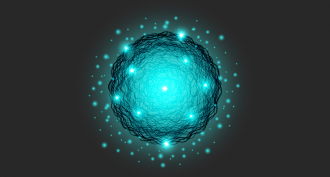 Physics
PhysicsTo witness maximum pressure, peek inside a proton
Scientists used experimental data to estimate the pressures inside a proton. And surprise: Its mega-big — the greatest known!
-
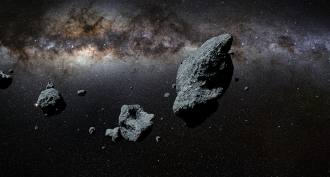 Chemistry
ChemistryDiamonds and more suggest unusual origins for asteroids
Inside a meteorite, scientists found sulfur and iron wrapped in tiny diamonds. Those gems hint the rock formed inside a long-lost planet.
-
 Health & Medicine
Health & MedicineScientists offer new explanation for knuckle-cracking
That annoying pop may come from the partial collapse of bubbles in the joint fluid.
-
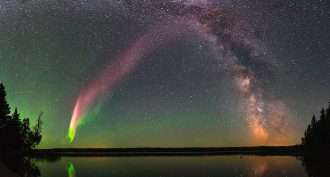 Physics
PhysicsMeet STEVE, the northern lights in mauve
STEVE is a nontraditional aurora. It might be a visible version of usually invisible charged particles drifting through Earth’s upper atmosphere.
-
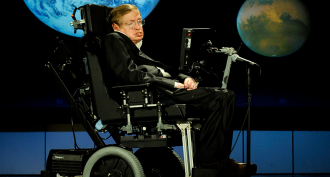 Science & Society
Science & SocietyLegendary physicist Stephen Hawking dies at 76
Theoretical research by Stephen Hawking helped shape how scientists and the public alike would come to understand black holes and other facets of astrophysics.
-
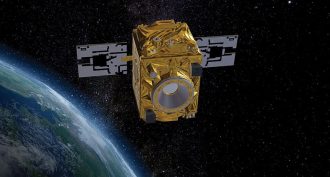 Physics
PhysicsMajor gravity experiment recreated aboard a satellite
A spacecraft was used to “drop” two objects and test their rate of fall. The new, super-precise findings confirm objects will fall at the same rate (in the absence of air resistance) — and that when it comes defining the effects of gravity, Einstein got it right.
-
 Physics
PhysicsYou can peel permanent marker, intact, off of glass
The surface tension of water can essentially scrape a thin film of some water-repellent material — such as permanent ink — off of glass.
-
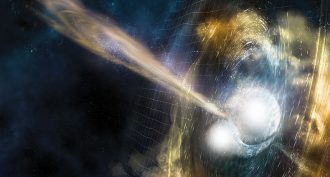 Physics
PhysicsAstronomers finally find the cosmic source of gold and silver
After a collision between neutron stars is caught rippling spacetime, telescopes home in on where the ripples came from. The afterglow of light they found provided interesting new science.
-
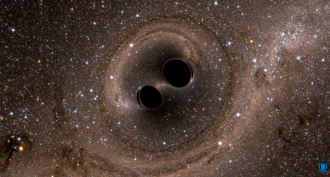 Physics
PhysicsTrio wins physics Nobel for detecting gravity waves
The 2017 Nobel Prize in physics went to three physicists for helping figure out how to search for ripples in spacetime — which launched a new field of astronomy.
-
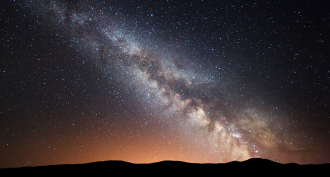 Physics
PhysicsThe Milky Way galaxy houses 100 million black holes
Astronomers are estimating the number of black holes in galaxies of all sizes.
-
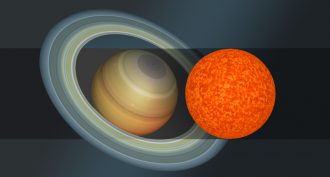 Space
SpaceNewfound stars rank as farthest and one of the smallest
Astronomers have found two stars for the record books — the most distant ever observed and one of the tiniest now known.
-
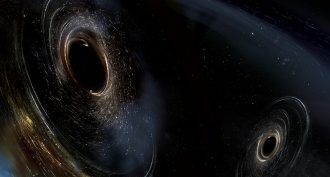 Physics
PhysicsGravitational waves detected yet again
For the third time in 16 months, scientists have announced detection of gravitational waves washing over the spacetime environment in which Earth resides. This seems to show that such waves may not be rare.